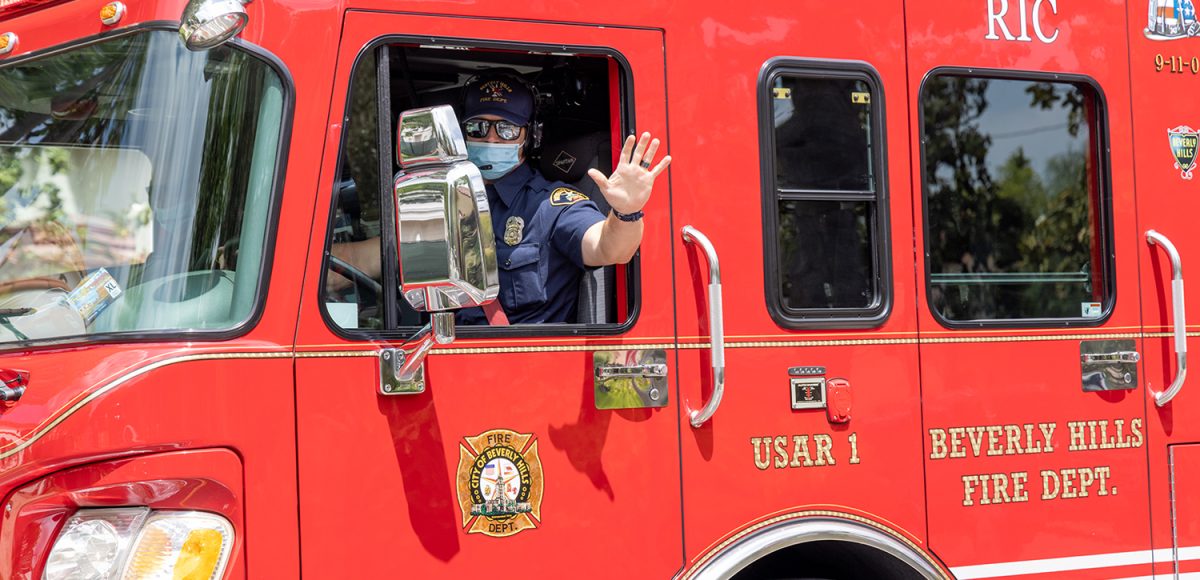Beverly Hills is known for its expanses of green space and canopies of trees. As of 2019, the city was home to approximately 25,000 trees in the public right-of-way and municipal parks, with the oldest planted trees dating back to 1907. Still, this is Los Angeles–a desert, by any measure–and at a time of worsening fires and a changing climate, fire safety has taken on added importance. While the city has commissioned numerous fire safety reports over the years, a new report out this week takes a new, holistic look not just at the threats to the city, but how police, fire, businesses, and the community can help reduce them.
With the release of the new Wildfire Assessment Report, slated for release on July 9 at 9 a.m., the city is holding two community meetings on July 12 and 13 at 10 a.m. and 6 p.m., respectively, to provide residents an opportunity to hear from the consultants who authored the report and the experts who contributed to it. The report looks at key areas of risk and risk mitigation, including public trees, private landscaping, public education, evacuation challenges, smoke impacts, structure resiliency, and many other issues.
As Beverly Hills Fire Department (BHFD) Chief Gregory Barton told the Courier, today’s fires are not the same as fires of the past. “This is where this community meeting will be outstanding, because we have some very good consultants with their fire experts who’ve been really drilling down and studying this, and they’ll show how the fires of five years ago are completely different than they are now,” he said.
The good thing is that Beverly Hills already takes fire safety seriously and has for years. Case in point, Barton said, this most recent Fourth of July. The city deployed equipment, engines, and the battalion chief to patrol the city. Up in the hills, the battalion chief scanned the horizon: fireworks in L.A., fireworks in Santa Monica, but all quiet on the home front. “We had nothing, and we had people on patrol just in case, but we didn’t have anything,” Barton said. A boring night, which Barton prefers.
As far back as 2005, with San Diego’s devastating 2003 Cedar Fire still fresh in the state’s memory, the city took extra precautions against wildfires. Then, Barton and members of the community living north of Sunset Boulevard established a Firewise USA site, part of the National Firewise Communities Program. Recognition as an official site required development of an action plan and fire risk mitigation efforts on the level of individual households within the site. The city contracted Jack Cohen, a well-known retired U.S. Forest Service Research fire scientist, to do site surveys of the area north of Sunset–a particularly vulnerable area given its proximity to dry, fuel-rich chaparral hills. The fire department and community members did outreach in the area and encouraged households to invest in fuel removal.
Later, in 2008, the National Firewise Communities Program awarded Barton, then Deputy Fire Marshall, with the Firewise Leadership Award for his “innovative approach to community wildfire education and preparation.”
“We can’t do it as the Fire Department, the community can’t do it as the homeowner,” Barton said. “We really have to work together as a team.”
But Barton is also aware of how an overemphasis on the threat and an underemphasis on the power people have to combat it can lead to apathy and nihilism. “I want to empower people. I want to give people the information and the knowledge, and then help them anyway we can and work together to come up with a solution.”
The public can attend the meetings either in person in the Council Chamber or virtually at beverlyhills.org/live. Barton only asks that attendees to the meetings bring two things: “I’d just love for people to come with their ideas and opinions.”







